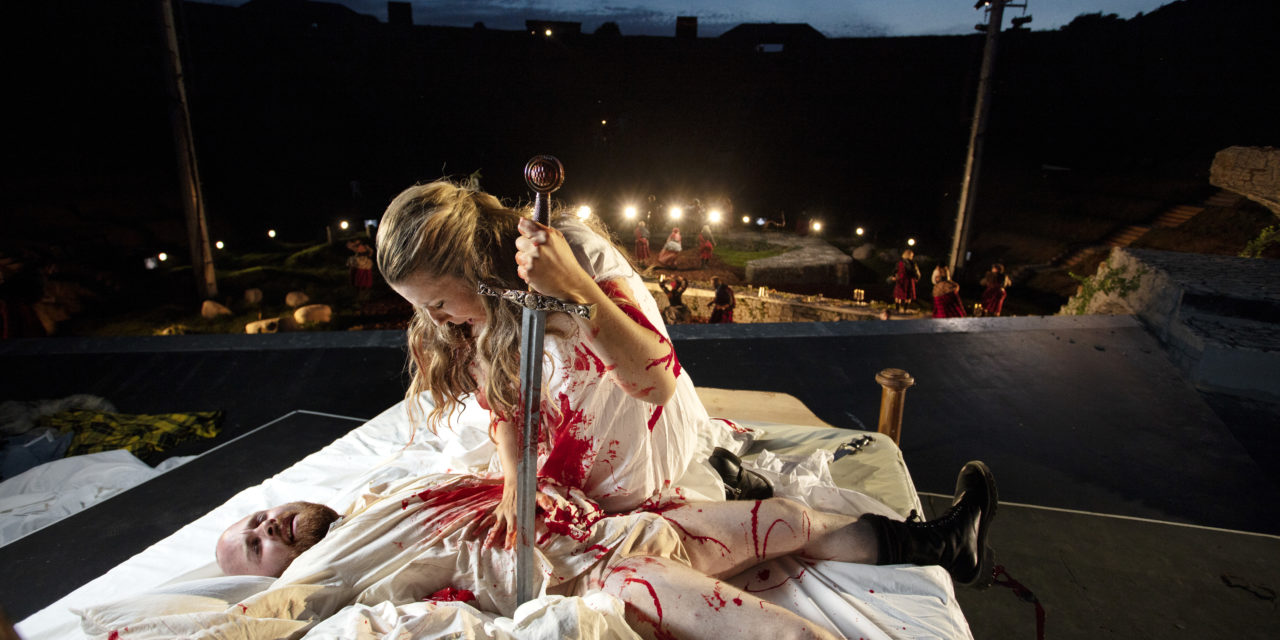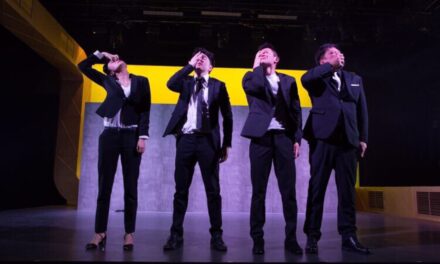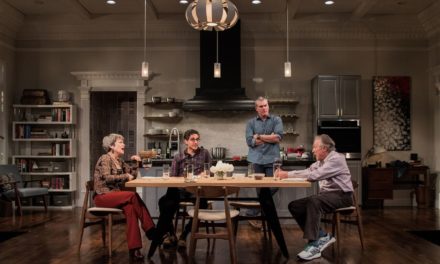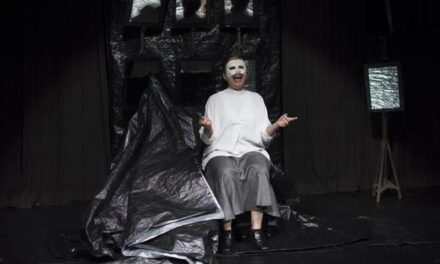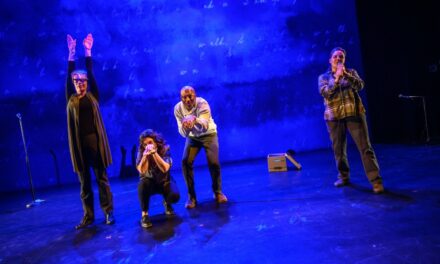The Greek-born opera director Rodula Gaitanou has made a name for herself internationally. She is currently in Denmark showing Donizetti’s tragedy Lucia Di Lammermoor at Opera Hedeland. ISCENE’s editor Rie Hammer met the director for a talk about cultural characteristics, inspiration, the woman Lucia, and the challenges of opera today.
Hammer: You are yourself of Greek origin, educated in France, and living in London while creating operas all over the world from Australia to Sweden, China, and now in Denmark. What is the first thing you observe as a nation’s characteristic?
Gaitanou: Food, of course! Culinary traditions give me always a great insight into a nation’s taste and taste for hospitality.
Hammer: How do you touch upon the specific countries’ cultural uniqueness in relation to your artistic approach in the opera productions?
Gaitanou: I am very interested in the history of each and every place I visit; that informs quite a lot my opinion and view of the mentality of the people I meet. But opera is a very international art form and arena. In the last production I did, I was working with an Argentinian lead singer and an Australian conductor on a piece by an Italian composer with a libretto in French. For me it’s not creating work for a specific audience, it’s rather inspiring people to dig deeper and bring to the surface all the layers of humanity. It’s the adventures of the human condition that connect us all rather than trying to strike a particular national cord.
Hammer: What kind of story do you want to bring forward in Lucia Di Lammermoor?
Gaitanou: This is the story of a woman whose fate is decided by the men surrounding her, with a fatal outcome. I very much see Lucia as an icon of a woman, she becomes an example of what mental and physical oppression can do to you, and sacrifices herself so that generations of women after her won’t have to endure the same fate. The way I see it, she manages to change the lives of the women of her community forever.
Hammer: Which artistic approach have you taken to substantiate this particular angle of the story?
Gaitanou: The way I see the main character is through a particular lens: she is a strong woman who fights on her own for what she stands for. Patriarchy will crush her and she will respond by committing a murder and crossing to the other side of the bridge of logic.
Hammer: You have previously mentioned that you draw inspiration from film and TV shows like The Hunger Games or The Handmaid’s Tale when working with William Tell, and Fellini has been mentioned as an inspiration for Ariadne Auf Naxos. What is it that film and television, in particular, can give to opera?
Gaitanou: Inspiration for the world that I want to create for each piece comes from everywhere really. But inspiration is a very personal thing, and the parallels that one draws each time are not always very present for everyone. I draw inspiration from all sorts of different things: a gesture of someone or a moment in between two people that I happened to witness walking down the street, a smell, a painting, a television series, or a book. It varies according to the piece I am working on at the moment.
Hammer: What has been the inspiration for Lucia Di Lammermoor?
Gaitanou: Landscape pictures of ruins of castles and old tales were the inspiration for Lucia. The sort of ruins that you have to close your eyes and imagine the rest to complete the picture and visualize the lives once lived in amongst these walls.
Hammer: You regularly work with scenographer and light designer Simon Corder. What kind of room are you seeking to create together?
Gaitanou: The world and the space we are trying to create every time really depends on the piece. Simon is a fantastic designer who creates spaces with a particular care for how architecture takes the light. He’s got wacky ideas, a great sense of humor, and a strong instinct for the work. Our dialogue is always moving ideas forward: only the strong survive.
Hammer: What kind of room or atmosphere are you seeking to create at Hedeland?
Gaitanou: We very much approached the work as a site-specific show; we were very inspired by the site itself. Nature and gothic architecture are the two keys to the sort of atmosphere we are seeking to create. I want to pair this up with intense performances outpouring raw emotion. The site, the cast and the work that’s being done so far are very promising.
Hammer: How do you use the outdoor location? What kind of challenges are there, for example, in regard to lighting compared with working in a closed theatre?
Gaitanou: Well, the exciting thing is to transition from daylight to night, the theatre lighting gradually taking over from the sun. There are special moments when a different visual reality takes hold on the journey from evening to darkness.
On the other hand, it’s sometimes frustrating not to be able to control and guide the attention of the audience as you can in a closed theatre.
Simon really likes the randomness and uncertainty that it brings to the evening.
Hammer: From your point of view, what is opera’s greatest advantage today?
Gaitanou: The fact that in the age of technological revolution and globalization this very international form can reach out to far more people that it has done ever before–be it by new media, live transmissions–the doors of opera houses are wide open and the social gesture is to reach out to the community to create the audience of tomorrow.
Hammer: What is opera’s greatest challenge today?
Gaitanou: How to make an art form so linked to its form and attendance protocol relevant for today’s audience. Our attention span is so short, and yet we demand that our audiences stay silent, seated, and fully focused on the drama on stage for nearly three hours. How do we respond to that apart from creating a good night out? How can we soften the sharp edges of such an artificial attendance protocol? These pieces were created for audiences who were allowed to have a chat, do business, flirt, and have a drink while they were watching these works with the house lights on. Silence and applause was a sign of appreciation rather than a ritual. Spontaneity was a key part of the whole experience and highly encouraged. How do we bring more of that to the stiffness of attending opera today? I for one am thinking about it.
This post was written by the author in their personal capacity.The opinions expressed in this article are the author’s own and do not reflect the view of The Theatre Times, their staff or collaborators.
This post was written by Rie Hammer.
The views expressed here belong to the author and do not necessarily reflect our views and opinions.

